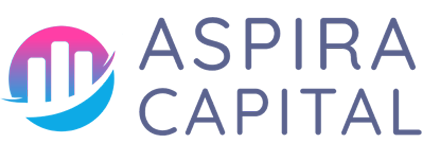Table of Contents
- Why Spring Cleaning is Important
- Organizational Tips for Financial Documents
- Update Your Financial Software
- Analyze and Reduce Expenses
- Review Accounts Payable and Receivable
- Prepare for Tax Season
- Set New Financial Goals
- Streamline Your Payroll Process
- Implement Financial Controls
- Final Steps for Financial Revitalization
Why Spring Cleaning is Important
Spring is not just a time for physical cleaning; it’s also the perfect opportunity to examine and refresh your financial records. By Spring Cleaning Your Business Finances, you not only enhance financial organization but also position your business for improved profitability and sustainability.
Key Benefits:
- Increased Efficiency: Organized financial records can speed up audits and financial reporting.
- Improved Cash Flow: Identifying inefficiencies can help you streamline operations.
- Strategic Planning: Understanding your financial status allows for better future planning.
- Diminished Stress: Managing your finances proactively can reduce financial anxiety.
Organizational Tips for Financial Documents
Keeping your financial documents organized is crucial for smooth operations and effective decision-making. Consider these tips for organizing your financial records:
- Create a Digital Archive: Use cloud storage solutions like Google Drive or Dropbox to digitize and store important documents.
- Utilize Accounting Software: Programs like QuickBooks or Xero can help keep your records easily accessible.
- Establish a Naming Conventions System: Develop a consistent naming convention for files to simplify searches.
- Set Up a Regular Review Schedule: Dedicate time each month for file management and organization.
Update Your Financial Software
Outdated financial software can lead to inefficiencies and inaccuracies in your financial reporting. Ensure that you are utilizing the latest features and security measures by:
- Checking for Updates: Regularly check for updates to your financial software to ensure you have the latest features.
- Training Your Team: Ensure your staff knows how to efficiently use the software you employ.
- Evaluating New Options: Look into emerging technologies or new platforms that may provide better features.
Analyze and Reduce Expenses
Conducting a thorough analysis of your expenditures can uncover hidden costs that can significantly impact your bottom line. Follow these steps to review your expenses:
- Perform a Line-Item Review: Go through every expense category to find unnecessary expenditures.
- Negotiate with Vendors: Speak with suppliers for potential discounts or better rates.
- Assess Subscription Services: Cancel subscriptions that are no longer necessary or in use.
- Utilize Expense Tracking Tools: Software can help you identify spending patterns and areas for improvement.
Review Accounts Payable and Receivable
Regularly reviewing your accounts payable and receivable ensures you have a clear understanding of your cash flow. To maximize cash flow and accountability, consider these actions:
- Audit Outstanding Invoices: Keep track of overdue invoices and initiate follow-ups promptly.
- Optimize Payment Terms: Negotiate favorable payment terms that align with your cash flow needs.
- Implement Automated Reminders: Set up automated reminders for payment due dates to prevent late fees.
Prepare for Tax Season
Proper preparation for tax season can prevent headaches come filing time. Here are some crucial steps to consider:
- Compile Necessary Documents: Gather all tax-related documents including financial statements, income statements, and receipts.
- Consult a Tax Professional: Engage with a tax advisor for insights on new laws and deductions.
- Utilize Tax Preparation Software: Consider tax preparation software to streamline the filing process.
Set New Financial Goals
Establishing new financial goals can give your business direction and purpose for the upcoming year. Make these goals SMART (Specific, Measurable, Achievable, Relevant, Time-bound):
- Increase Revenue: Set a percentage increase goal for the upcoming quarter.
- Reduce Unnecessary Expenses: Aim to cut unnecessary costs by a specific amount.
- Improve Profit Margins: Target an improved profit margin as a focus for the fiscal year.
Streamline Your Payroll Process
An efficient payroll process is crucial for maintaining employee satisfaction and legal compliance. Here’s how to streamline it:
- Automate Payroll Functions: Use payroll software to automate calculations and submissions.
- Review Employee Classification: Ensure employees are correctly classified to avoid IRS penalties.
- Implement Direct Deposit: Encourage employees to utilize direct deposit for timely payments.
Implement Financial Controls
Establishing financial controls helps to safeguard your business against fraud and mismanagement. Consider these measures:
- Set Approval Processes: Require multiple approvals for high-value transactions.
- Monitor Spending: Regularly monitor budgets and spending against forecasts.
- Conduct Regular Audits: Schedule regular internal audits to detect discrepancies early.
Final Steps for Financial Revitalization
As spring cleaning your business finances comes to a close, take these final steps to ensure all areas are tidy and optimized:
- Evaluate Financial Reports: Regularly generate and analyze financial reports to guide decision-making.
- Conduct Financial Training: Provide your team with financial training to enhance financial literacy within your organization.
- Stay Compliant: Keep abreast of any changes in financial regulations that may affect your business.
By following these essential tips, you can effectively revitalize your business finances this spring. Implementing these strategies as part of your Spring Cleaning Your Business Finances routine will ensure a more organized, efficient, and profitable business.

